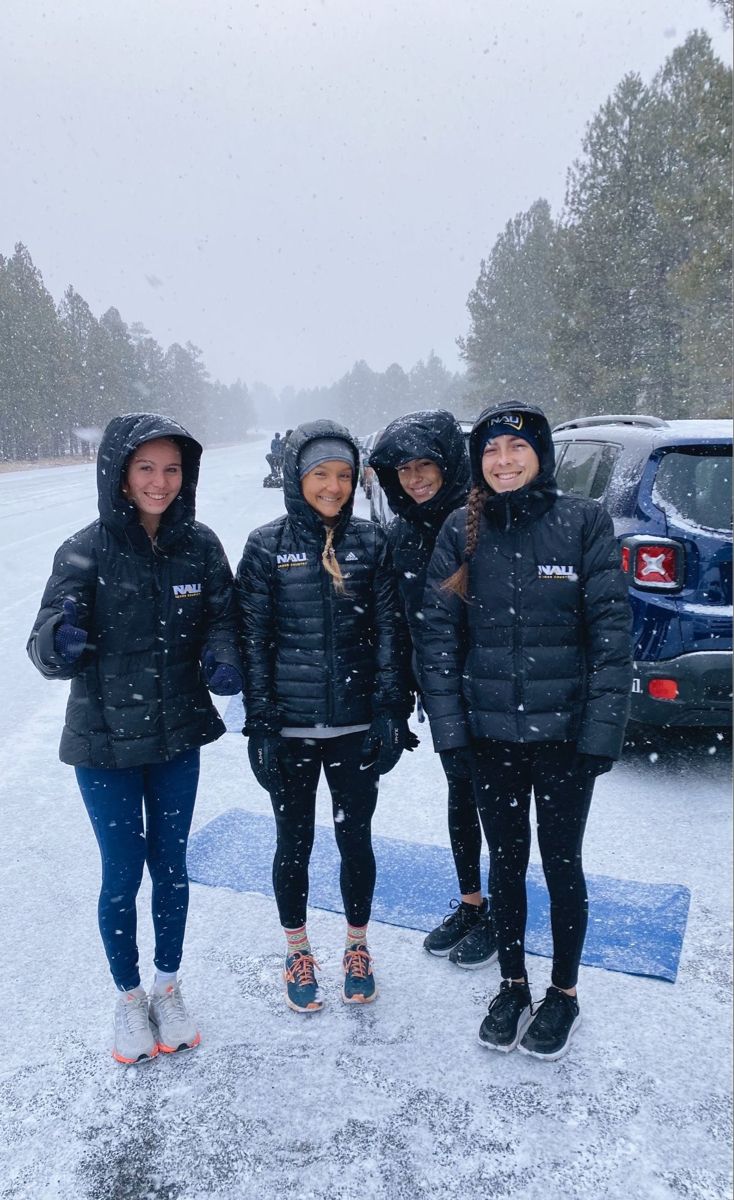In a world where climate change and the new world order are high on the agenda, it is especially important to be prepared for running in different conditions 😉
Winter running can bite your ass and challenge your ambition. But it's worth feeling the glory of being above circumstances.
Running on snow requires some adaptation of technique. Running on an unstable and slippery surface affects everything — your pace, heart rate, stride length, breathing, arms and torso movement, even your butts. All of this is natural and doesn’t interfere with running that much. Especially if running is your thing.
Let’s go through it and try to answer the question “How to run in winter?”
Slower pace.
Slippery, snowy and icy surface worsens the propulsion — each push has some slippage. This is especially well felt when accelerating or running uphill. That’s why the average running pace in winter is always lower. For everyone. Accept this and keep running. In the spring and summer your pace will return to normal level.
Higher heart rate.
Running in the snow engages more of your leg muscles — especially your ankle and lower leg muscles. Added to this is tension in the glutes and back to balance the sudden change in the body’s center of gravity. The upper body — arms and shoulders — are also more actively engaged in case of unexpected slips or deviations from straight-line movement. Also, the often sub-zero air temperature demands more calories from the body. All of this raises heart rate by 10–15 beats.
Shorter stride length.
The risk of falling with a wide stride on snow increases greatly. This makes us want to protect ourselves. We reflexively shorten the stride and increase the frequency (cadence). This makes us feel more stable, which is normal. Fast foot, high hips, and wide stride are not for winter running.
Frequent breathing.
Increased breathing is caused not only by an increase in heart rate, but also by an unwillingness to inhale cold air deeply. In order not to catch a cold on the run, it is better to breathe more often, reducing the amount of cold air captured in the mouth. This way of breathing, of course, reduces the speed, but this will inevitably happen for the reasons mentioned above.
Waving your arms around.
Like a tightrope walker when running on snow and ice, we help ourselves with our hands. In winter, it’s not about perfect technique — it’s good that you can run. Leave the ideal arm technique for spring and summer. For now, focus on the crunch of the snow.
Tight butt.
Have you noticed that when moving on ice or any slippery surface, we tighten our buttocks? This is how we keep your body as upright as possible, avoid deviations in your center of gravity and the risk of falling when moving on an unstable or slippery surface. So relax your head, tighten your butt and run!
What else will help you run in the winter?
Here are some tips to run in the snow more efficiently and safely:
- Choose the right shoes: use running shoes with good tread for better traction in the snow. Some models have special overlays to prevent slipping.
- And the right trails: avoid areas with deep and soft snow, especially if it is difficult terrain. This can increase the risk of injury.
- Be prepared for extra effort: running in snow puts more strain on your muscles because they must overcome the resistance of the snow. Keep this in mind when planning the distance and intensity of your workout.
- Take weather conditions into account: windy or wet weather can make snow slippery. Use extreme caution and adapt to the conditions.
- Warm up and stretch: do a more thorough warm-up before running and generally start running oh-so-slowly. This will prepare your muscles for the extra strain and prevent potential injuries such as sprains and bruises.
- Dress brighter: if you run in the dark, be sure to wear brightly colored clothing or reflective elements to increase visibility.
- Listen to yourself: if you feel tired or uncomfortable, don’t hesitate to reduce the intensity of your workout or stop running altogether.
Running in the snow is real. The key is to adapt.
